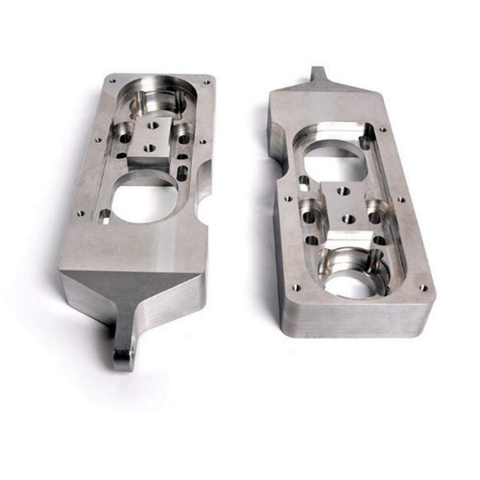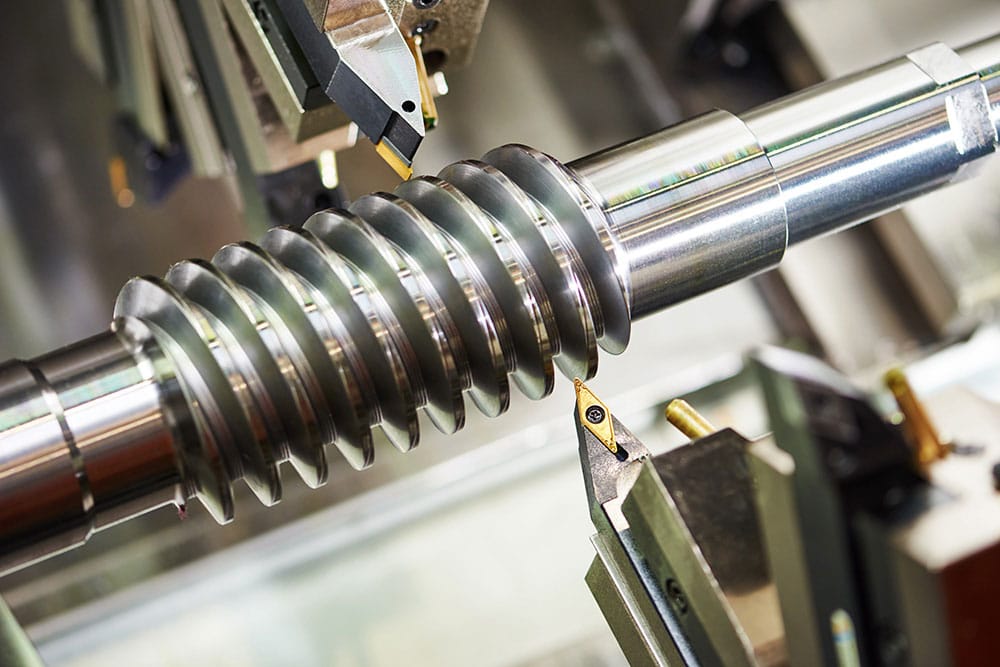Explore what makes a reliable Aluminum Foundry stand out from the rest
Wiki Article
Checking out the Duty of Aluminum Casting in the Evolution of Industrial Manufacturing
Light weight aluminum spreading has actually played a pivotal role in shaping contemporary commercial production. Its lightweight and durable nature has transformed the production of parts for various industries, including automotive and aerospace. With innovations in casting strategies, the industry has seen renovations in accuracy and efficiency. As sustainability becomes increasingly important, the recyclability of aluminum adds another dimension to its value. What implications does this have for the future of producing methods?The Origins of Light Weight Aluminum Spreading
When the adaptability of aluminum was very first recognized, Aluminum casting has an abundant background that dates back to the late 19th century. Originally, this light-weight steel was regarded challenging to collaborate with because of its high melting factor and sensitivity to oxidation. Nonetheless, innovative minds started to discover its potential, resulting in the growth of various casting methods. The introduction of light weight aluminum right into commercial applications marked a significant switching factor in production, permitting the production of complex components that were previously unattainable with other metals. By the very early 20th century, aluminum casting had obtained traction in numerous sectors, from vehicle to aerospace, owing to its strength and light-weight buildings. The establishment of foundries and the introduction of aluminum alloys even more moved its popularity, establishing the phase for future improvements. The origins of aluminum casting laid the groundwork for its essential function in contemporary commercial production.Trick Improvements in Light Weight Aluminum Casting Techniques
Recent developments in aluminum spreading techniques have considerably transformed industrial production. Technologies in die casting processes have actually improved precision and efficiency, while the advancement of sand casting has boosted convenience and cost-effectiveness. These advancements are reshaping the landscape of aluminum production and increasing its applications across various sectors.Die Casting Innovations
As sectors venture for enhanced effectiveness and product quality, die casting has become a focal point for development in aluminum casting strategies. Current advancements have actually concentrated on enhancing mold and mildew style, temperature level control, and product properties, substantially decreasing cycle times and boosting accuracy. The introduction of computer-aided style (CAD) and simulation software program has enabled manufacturers to enhance die geometries and anticipate possible defects before production. In addition, the combination of automated systems has streamlined operations, boosting uniformity and decreasing human error. Innovations such as vacuum pass away spreading and semi-solid metal spreading have actually better boosted the mechanical homes of aluminum parts, leading to lighter, more powerful items. These developments placement die spreading as a crucial component in the affordable landscape of contemporary production.Sand Spreading Evolution
Innovations in aluminum spreading techniques have actually not been restricted to die spreading; sand casting has likewise undertaken significant advancement. Commonly reliant on hands-on processes, modern-day sand spreading has embraced automation and digital technologies, boosting performance and accuracy. Innovations such as computer-aided design (CAD) enable even more detailed mold styles, while 3D printing of sand molds has actually transformed production times and lowered material waste. Additionally, the intro of advanced sand blends improves the surface coating and mechanical properties of actors elements. These growths not only reduced production costs however additionally increase the extent of applications for sand-cast aluminum products. As sectors require better and faster turnaround, the advancement of sand casting remains critical in fulfilling these modern production obstacles.The Influence of Aluminum Casting on the Automotive Sector
Light weight aluminum spreading has transformed the automotive sector by making it possible for the production of lightweight parts that enhance lorry performance. These innovations add considerably to improved fuel efficiency, aligning with ecological criteria and consumer demands (Aluminum Casting Company). Furthermore, the flexibility of aluminum casting cultivates style adaptability, enabling cutting-edge methods in car productionLight-weight Component Advantages
The auto sector has actually significantly accepted lightweight elements to boost fuel performance and efficiency. Light weight aluminum spreading has actually become a crucial technology in this change, permitting manufacturers to produce parts that are not just lighter but likewise structurally robust. These lightweight parts contribute to improved lorry dynamics, making it possible for better handling and acceleration. Furthermore, aluminum's deterioration resistance prolongs the life-span of automobile parts, lowering upkeep costs in time. The convenience of aluminum spreading enables detailed styles that were formerly unattainable, facilitating advancement in automobile aesthetics and functionality. As automotive producers remain to focus on sustainability, making use of lightweight aluminum cast components straightens with efforts to minimize general car weight, marking a significant innovation in vehicle design.Enhanced Fuel Effectiveness
As the automobile sector seeks ingenious means to improve gas efficiency, light weight aluminum spreading has actually emerged as an essential remedy. The lightweight properties of light weight aluminum significantly minimize vehicle weight, resulting in improved gas economic climate. By replacing larger products with aluminum cast parts, makers can maximize engine performance and decrease energy usage. This change not only helps in minimizing greenhouse gas discharges however likewise lines up with worldwide sustainability goals. In addition, aluminum's exceptional thermal conductivity enables better heat dissipation in engines, further enhancing efficiency and performance. Because of this, lorries making use of light weight aluminum cast components can attain greater miles per gallon, interesting eco-conscious customers and meeting strict regulative requirements. This improvement highlights aluminum's essential role in the future of auto manufacturing.Design Flexibility and Technology
While conventional materials usually enforce restrictions on style, aluminum spreading uses unequaled versatility that cultivates innovation in the auto market. This adaptability enables makers to produce complex geometries and complex features that were formerly unattainable. Lightweight light weight aluminum components can be customized to satisfy certain performance needs, enhancing both lorry effectiveness and aesthetics. Furthermore, the casting procedure supports rapid prototyping, enabling quicker iterations and lowering time-to-market for new layouts. As car manufacturers significantly prioritize sustainability, light weight aluminum's recyclability complements style efforts, promoting eco-friendly practices. Generally, aluminum spreading empowers developers and engineers to push the limits of creativity, causing the development of innovative cars that satisfy modern-day customer needs for performance, safety and security, and ecological responsibility.Technologies in Aerospace Via Aluminum Spreading
Light weight aluminum spreading has actually transformed the aerospace sector by making it possible for the production of lightweight yet extremely resilient elements. This technology enables for the production of complex shapes that standard production methods can not attain, leading to improved efficiency and efficiency in aircraft layout. Trick applications consist of engine components, structural components, and intricate assemblies that profit from light weight aluminum's superb strength-to-weight proportion.Additionally, innovations in casting strategies, such as high-pressure die spreading and financial investment spreading, have actually boosted dimensional precision and surface finish, decreasing the need for comprehensive machining. These developments simplify production processes, decrease preparations, and reduced manufacturing costs, making light weight aluminum elements increasingly appealing to aerospace designers
Furthermore, the capability to integrate numerous functions into a single actors part reduces setting up time and possible points of failing. Because of this, aluminum spreading remains to play a crucial role ahead of time aerospace innovation, adding to the development of more secure, a lot more efficient, and eco pleasant aircraft.
Sustainability and Ecological Advantages of Aluminum Spreading
The aerospace market's shift toward light weight aluminum casting not only boosts efficiency yet likewise adds positively to sustainability initiatives within industrial manufacturing. Aluminum casting offers considerable environmental benefits, largely due to light weight aluminum's intrinsic recyclability. Approximately 75% of aluminum produced is still being used today, showcasing its possibility for circular economic situation methods. In addition, the power required to reuse light weight aluminum is noticeably lower-- as much as 95% much less-- compared to creating brand-new aluminum from ore.Additionally, aluminum casting processes frequently generate much less waste, as innovative strategies enable the reliable usage of materials. This reduces the environmental impact connected with production. The lightweight nature of light weight aluminum likewise brings about extra fuel-efficient airplane, reducing greenhouse gas emissions throughout procedure. On the whole, the combination of aluminum casting in industrial production not just sustains ingenious design and functionality but also straightens with global sustainability goals, making it a pivotal choice for eco mindful industries.
The Future of Aluminum Spreading in Production

Innovations in alloy advancement are expected to enhance the buildings of actors aluminum, making it lighter and a lot more durable (aluminum casting). These enhancements will certainly not only fulfill the growing demands of markets like vehicle and aerospace however additionally Aluminum Foundry add to environmental objectives by lowering power usage. Inevitably, the future of light weight aluminum casting in production shows up positioned for a paradigm shift, driven by innovation's ability to innovate and maximize making procedures
Frequently Asked Questions
Exactly How Does Light Weight Aluminum Spreading Compare to Other Metal Casting Processes?
Light weight aluminum casting deals advantages such as lower weight, improved deterioration resistance, and better thermal conductivity compared to other metal casting procedures. It might be less appropriate for high-temperature applications than products like steel or iron.What Are the Key Safety And Security Concerns in Light Weight Aluminum Spreading?
The major safety concerns in aluminum spreading consist of direct exposure to thaw steel, prospective burns, breathing of hazardous fumes, and threats connected with tools procedure. Correct safety and security protocols and personal protective devices are vital to minimize these risks.Can Aluminum Spreading Be Used for Artistic Purposes?
Aluminum casting can indeed be used for imaginative purposes. Artists usually value its flexibility, lightweight nature, and capability to catch complex details, enabling the production of both functional and attractive items that showcase creativity and craftsmanship.What Are the Costs Connected With Light Weight Aluminum Casting?

Exactly How Has Aluminum Casting Influenced Global Production Trends?
Aluminum spreading has actually significantly affected international manufacturing trends by supplying lightweight, durable elements, reducing production expenses, and boosting design versatility. Its fostering throughout various markets has structured procedures and cultivated advancement, shaping contemporary manufacturing techniques worldwide.Light weight aluminum casting has an abundant history that dates back to the late 19th century when the versatility of light weight aluminum was first identified. As industries undertaking for enhanced effectiveness and product quality, pass away spreading has arised as a focal point for development in aluminum casting strategies. Technologies such as vacuum cleaner pass away casting and semi-solid metal spreading have additionally boosted the mechanical homes of light weight aluminum components, leading to lighter, stronger items. Improvements in light weight aluminum spreading techniques have actually not been restricted to pass away casting; sand spreading has actually additionally gone through considerable development. Light weight aluminum casting offers significant ecological advantages, primarily due to aluminum's intrinsic recyclability.
Report this wiki page